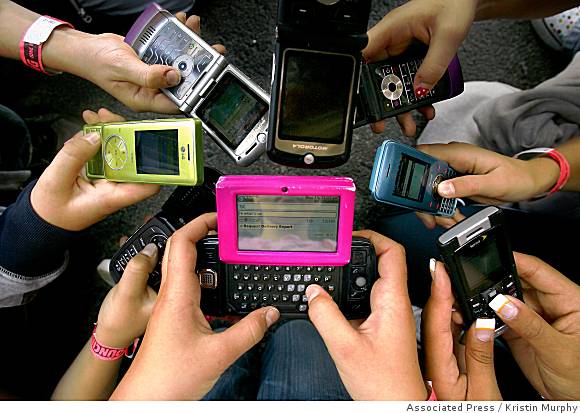By Elaine Rita Mendus
Más Wired
Latinos use their mobile phones for everything from texting to video chat to listening to music and much more. Phones have become a multi-use device for Latinos, much more so than for whites.
A study put together by the Pew Internet Center examined how adult cell phone users are using their devices, and what activities they are used for. The study broke down the data across a variety of demographics, but of most interest are the differences between how Hispanics use their devices from other racial groups. Like black mobile users, Hispanics tend to use their devices for a number of tasks, while white users tend to be less engaged with their mobile devices.
In general, 81% of cell phone users use their devices to send or receive text messages; 60% of users use these devices to access the Internet. About half of the user population uses their devices for sending or receiving email, downloading apps, accessing directions, recommendations, or “other location-based information,” and to listen to music. Only 21% of the population uses their phones for video calls/video chat, and a meager 8% uses their devices for “checking in” or to share their location with others.
All of the aforementioned statistics have been on the rise since they were first measured, except for geo-social activities such as checking in through programs like foursquare – this has been on a decline after it peaked in 2012.
When it comes to texting, 87% of Hispanics use their phones for texting. 85% of blacks do the same. What is interesting, though is that only 79% of whites use their phones for text messages. That said, the differences aren’t too stark.
Internet access through cell phones, though, is a sign of contrast. Here, the center notes that Hispanics, as well as blacks, young adults, individuals living in lower-income households, and those with lower levels of education are far more likely to report that a cell phone is a primary device for accessing the Internet. Only 56% of whites access the Internet through their mobile phones. On the other hand, 67% of Hispanics and 72% of black users are using cell phones to access the Internet.
Sending and receiving emails among the racial groups is unremarkable. Both Hispanics and whites use mobile email equally (53%, 52%), with blacks using mobile email slightly more, at 59%.
Again, with app downloads, Hispanics and whites tend to be the same, with 52% of Hispanics downloading apps, versus 48% of white users. Black phone users are much more app inclined, at 60%.
All populations tend to be equal with using phones for directions, with a slightly higher percentage of Hispanics using their phones for directions. 55% of Hispanics do this in contras to 51% of blacks and 49% of whites.
Minorities tend to be much more inclined to use their cell phones for listening to music in contrast to white users. Only 42% of whites use their devices for music. 64% of Hispanics use their devices for this purpose, with black users not far behind at 61%. This preference to use a phone for both devices seems to grow in popularity as income increases, with households bringing in more than $75,000 a year being far more inclined toward this behavior than any of the lower income brackets.
Hispanics are big on video chat. Blacks and whites share minimal enthusiasm for the ability, with 20% of black users using their cell phones to video chat, and 19% of whites doing the same. 32% of Hispanic cell phone users, though, use their devices for this purpose.
The declining trend of “checking in” is also another area where Hispanics stick out from black and white cell phone users. 6% of white users engage in this activity, with a slightly larger percentage of black users doing the same, at 9%. 17% of Hispanics, though, engage in these kinds of activities to check in and share their locations through their phones.
Overall, it seems that there is an inclination toward the use of the mobile phone as a Swiss army knife of technology for minorities. As pointed out in an article published in 2013, for some Latinos, income levels may be a barrier to owning a computer, or a variety of devices. Whites tend to have higher incomes, so they can afford to have music-dedicated devices, and dedicated computers for a majority of their internet usage. Blacks and Latinos may not be so lucky. Unsurprisingly, the mobile phone becomes a workhorse for minority populations – helping them remain in touch and in tune despite lower incomes.
The study can be examined in full here.



